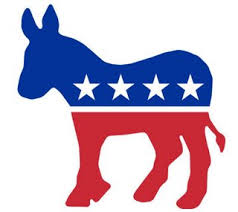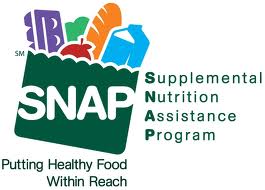
About two weeks ago I posted on an attempt to eat on an average allotment of food stamp distribution. My analysis:
I’m sure I could eat better on less than Mr. Ferguson.
This combined with nickgb’s critique of Ferguson:
…my combined total was $45.88, well over the challenge amount. So, either Safeway has a 66% markup over Dollar Tree’s prices, or Ferguson is being deceptive with the items he bought, or he’s lying. We report, you decide.
And his update:
This is really not a healthy diet for an adult, and that should tell you something about SNAP benefits. It’s disturbing that Ferguson thinks that his canned meat diet shows that benefits are too high.
I thought I would see how I could do in living up to my bragging.
First breakfast.
So, in life I don’t eat breakfast, but I get that most people do. So I’ll stipulate to breakfast. Given that breakfast, when I do eat it, is highly repetative I’m going with this:
Yogurt:

At $0.50 a day that comes to $3.50 a week. And adding a slice or two of toast:

The total for breakfast is $2.69 + $3.50 = $6.19.
Now lunch.
I’m going to use a combination of sandwiches and noodles for this. First the sandwiches. I already have the bread, so that’s free. I’ll eat peanut butter sandwiches two times a week. Adding the peanut butter:

I’m up to $9.80. 5 days to go.
The rest of the work week I’m going to go Asian – Raman:
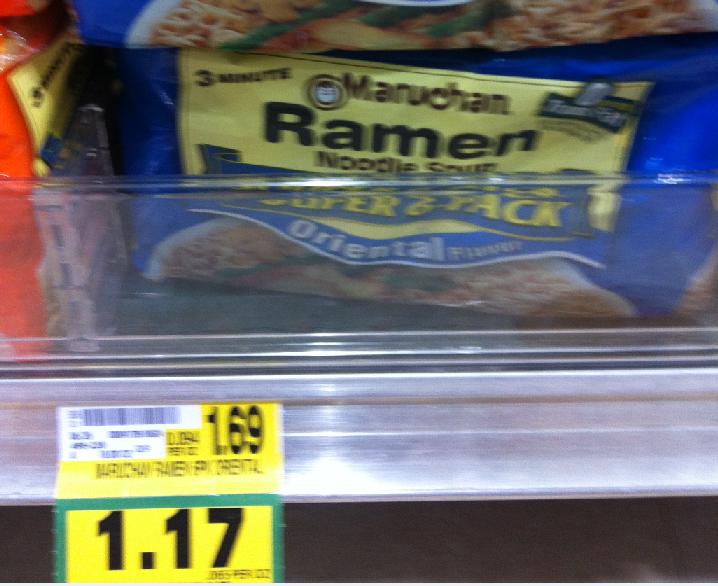
And I’ll add broccoli:

The total for three lunches is $1.17 / 6 = $0.20 per day or $0.60 for the week for the noodles and the broccoli is $0.75 a day. Per day total is $0.95 for a 3 day total of $2.85.
I have to buy lunch now for Saturday and Sunday.
On Saturday, I’ll go small and have a frozen meal:
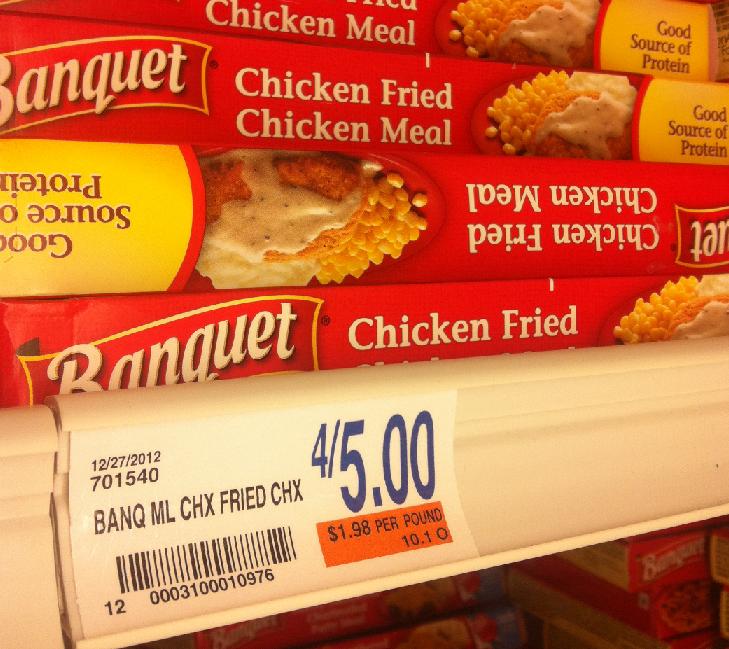
That’s a buck and a quarter. Add an apple:

Which is 2 per pound, $0.70 per apple, and you get a Saturday lunch for $1.95.
Sunday lunch comes later.
Now for dinner.
I have 7 to buy. First two:

That’s right – frozen pizza. I eat half a pizza a sitting. I can buy a deluxe pizza for 3 bucks. That comes to $1.50 a night.
Next, beans and rice. Not the nasty kind out of a can, but the kind you make yourself.
Rice:

And then Beans:

Together that’s $7.62. But it counts for two meals -at least- so I charge $3.80 per meal.
Next comes a pasta dinner. The noodles:
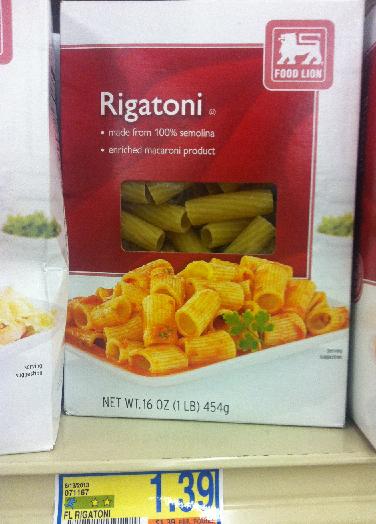
And the sauce:
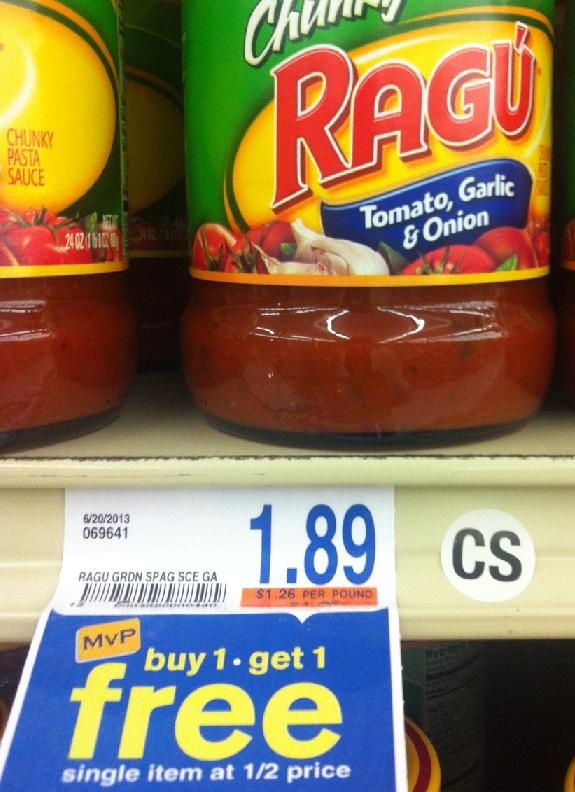
That’s $3.28 for the both and I’ll eat pasta twice. However, the sale is on the sauce so I get to save $0.95. I’ll take it. Total cost for my two pasta dinners? $2.33.
My last dinner will be steak. I can find it for:
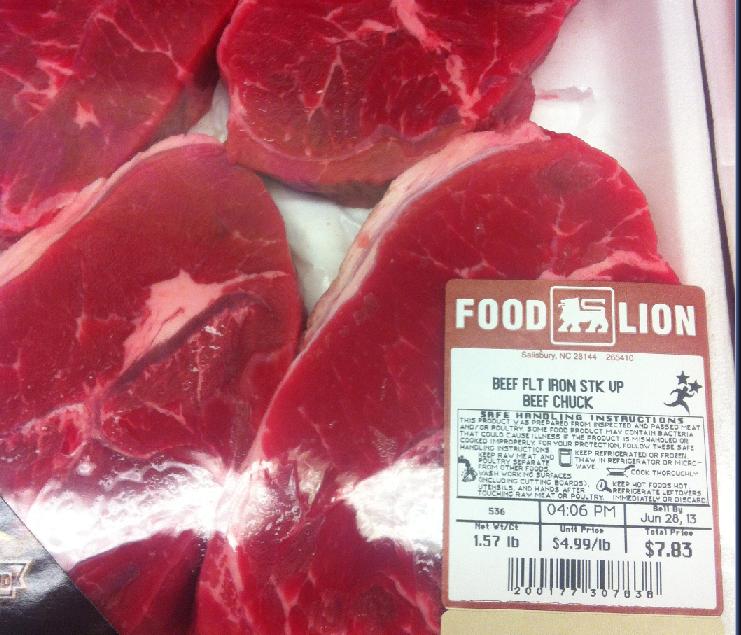
Combined with the rice I’ve already paid for, I have a nice steak and rice dinner. Add a veggie if you want to, broccoli, and the whole meal comes to $8.58.
But at 1.5 pounds, I get to eat it twice. Call it my last lunch.
That’s every meal. My cost so far?
$34.63
That’s significantly more than the $31.50 I was allocated. What to do?
Well, I’ve noticed that my list includes items that I’m having to buy for the first time, things like peanut butter, rice and bread. However, I’ll play by the rules and accept that I’m starting with a bare cupboard. So, I’ll ditch the steak and exchange it for Raman but keep the broccoli.
That gets me to $26.80 plus $0.20 for the Raman and the total is a straight $27.00.
I have 4 bucks to play with.
Bananas:

I’ll take 4 of ’em. Two per pound and I’ve spent $1.14.
Some carrots:

And now I’m up to $2.43.
How about some eggs:

I’m over. If I buy the eggs, I’m at $4.71. I’ll keep the eggs and put back 1 banana. I did it. I get $0.27 back for the banana and my bill sits at $4.44.
Now, I have eaten for the week and have a nice beginning for next week. I don’t have to purchase bread, peanut butter or rice next week. In fact, I don’t have to buy eggs or carrots either.
I’ve noticed that I didn’t purchase anything to drink. In my real life, I do not drink milk, but do have beer and wine with my evening meals. I recognize that this is an issue, but water for a week is not unrealistic. Further, it has occurred to me that I didn’t include butter in my budget, something that I do have on my toast and my eggs. So I may have further tweaks, but the point is the same.
For $31.50, I have eaten for a week AND included veggies and fruits. Plus I have a small beginning for next week to help me out even further.




















